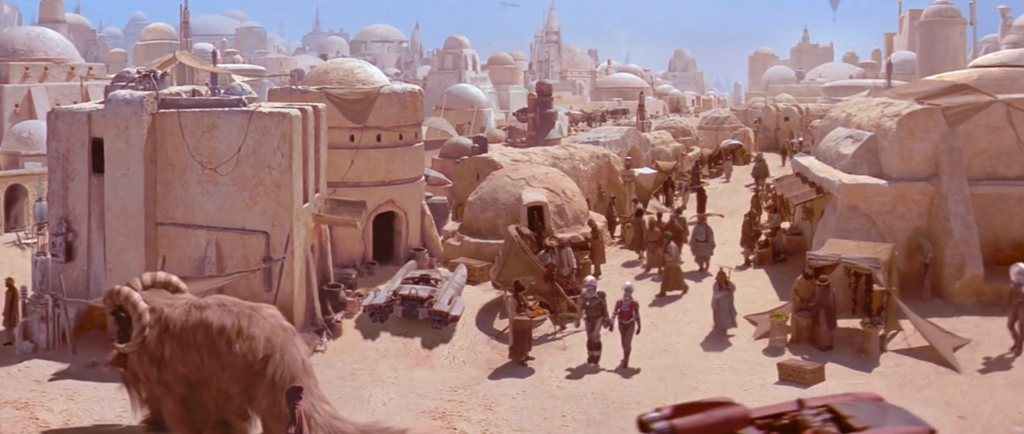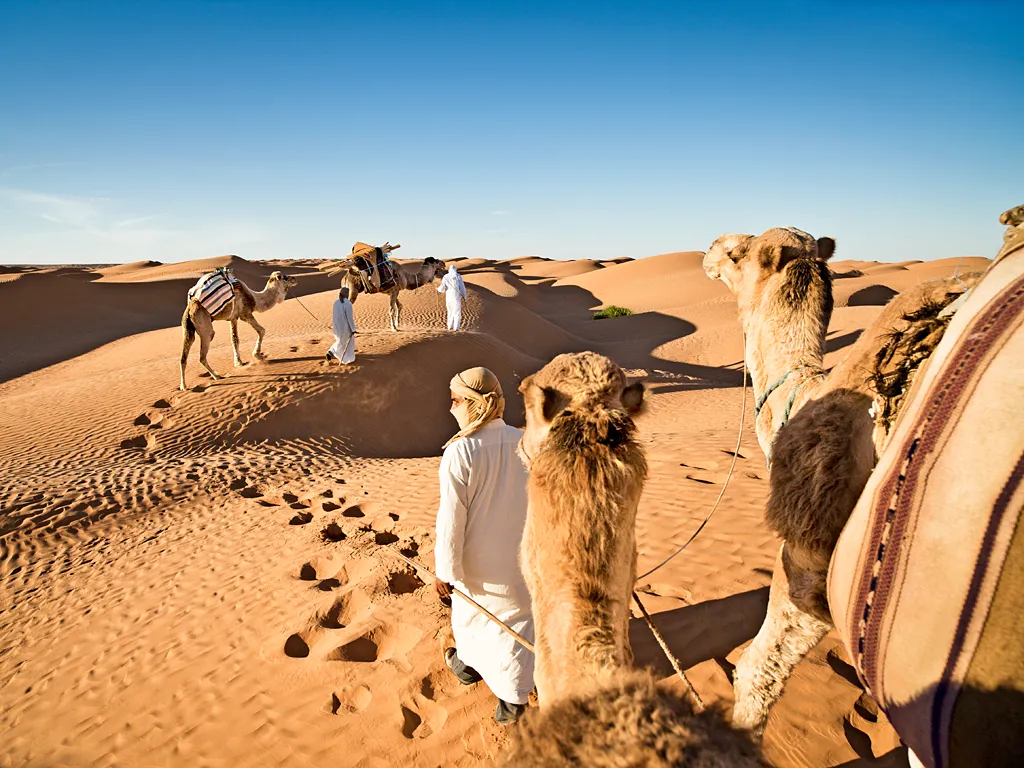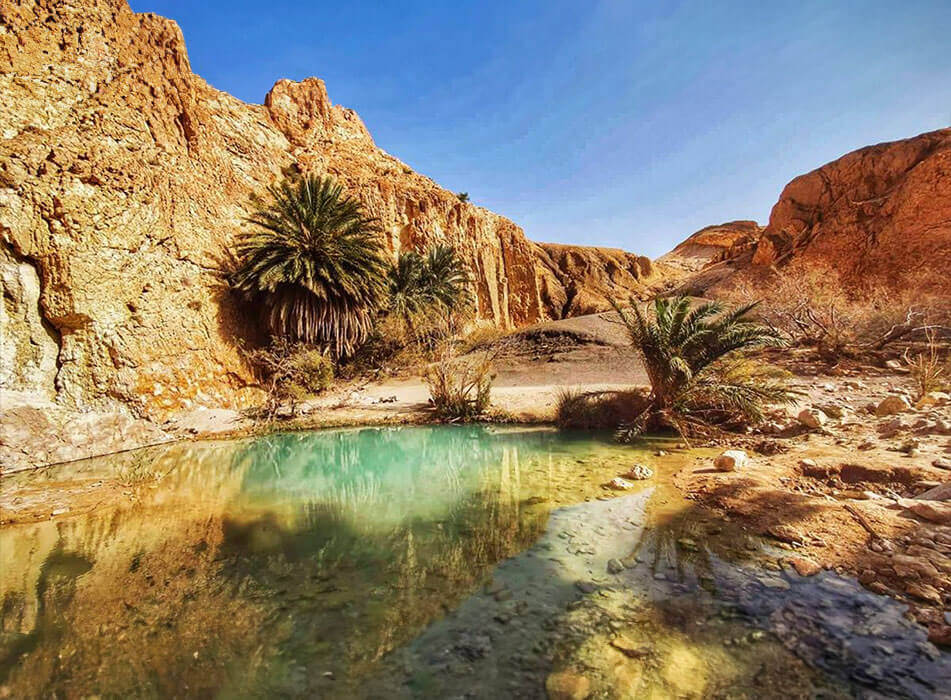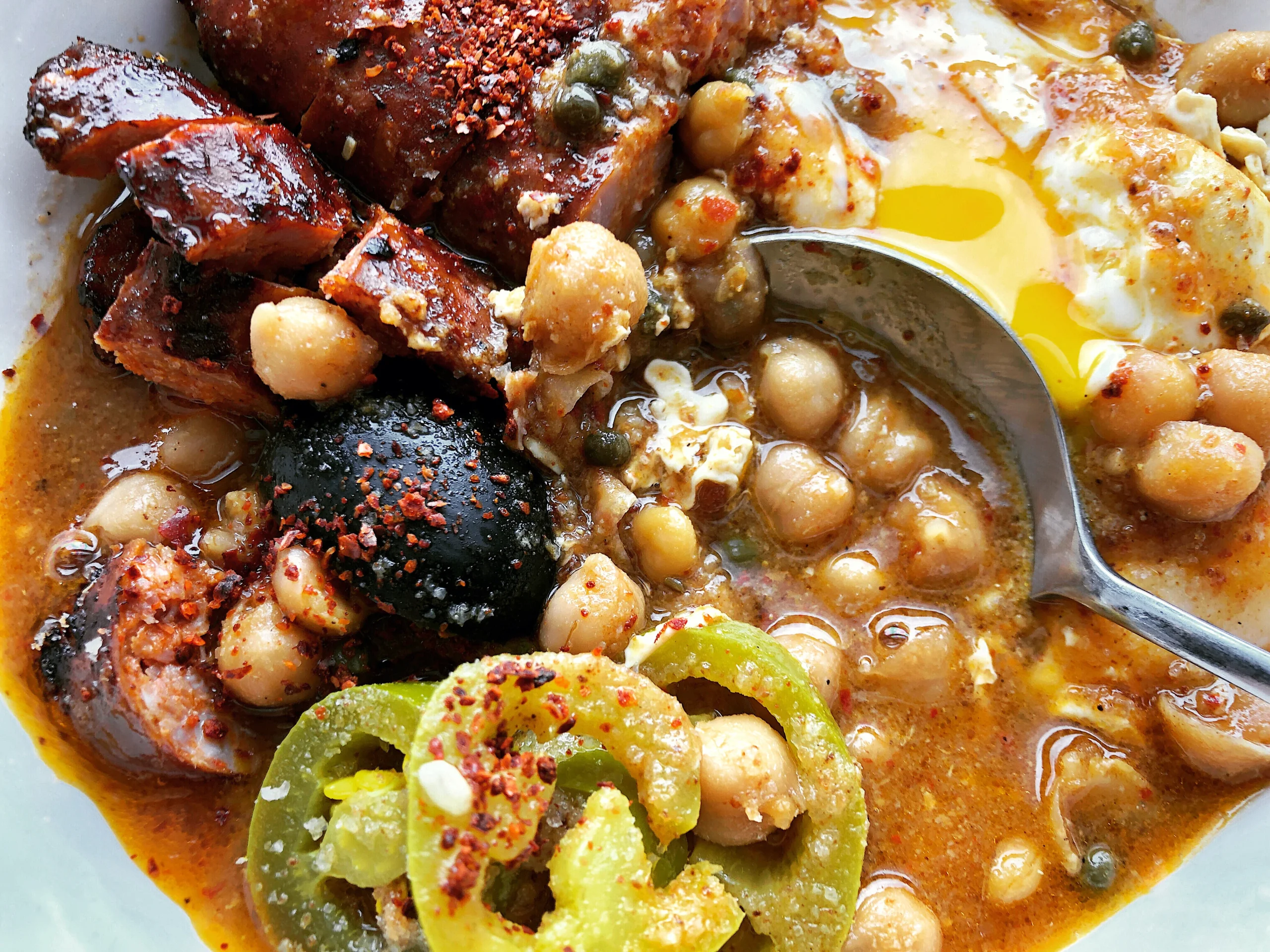Sailing Tunisia – Living the Experience

When we first sailed into Tunisia, we weren’t quite sure what to expect. We had chosen it for practical reasons — affordable marinas, a good base for winter — but almost immediately we realized that living here was about so much more than ticking boxes on a sailor’s checklist. Tunisia surprised us, not just with its low cost of living, but with its warmth, energy, and richness of daily life.
What we loved most was how everyday moments turned into experiences. Trips to the market weren’t errands; they were adventures. Stalls overflowed with oranges, herbs, olives, and freshly caught fish, and we often came back to the boat with bags heavier than our arms could carry — plus stories about the people who sold them to us. A simple stop for tea became a slow ritual, with pine nuts floating in our glass and locals eager to chat. Even walking through the souks, chaotic with spices, textiles, and shouts of bargaining, felt like stepping into a living museum.
The kids turned Tunisia into their playground. Narrow medina streets became mazes for them to explore, while beaches — even covered in winter seaweed — became fort-building arenas. History wasn’t something they read in books; it was something they climbed, touched, and ran through, from the stone corridors of the Ribat to the towering amphitheater of El Jem. They played gladiators while we stood in awe of how freely the past still breathes here.


Life in the marina added another layer to the experience. There was a real sense of community among sailors from all over the world, a constant exchange of tools, tips, and laughter. Locals welcomed us not as visitors passing through but as neighbors, always ready to help or share food. Tunisia’s hospitality is quiet but powerful — the kind that makes you feel you belong, even if you’ve just arrived.
And yet, even after months of living here, there’s so much we still haven’t seen. We’ve heard about the Sahara, where camel caravans still cross golden dunes and nights are spent under endless starlit skies. Friends told us about the troglodyte homes of Matmata, carved into the earth like something from another world, and the holy city of Kairouan with its ancient mosques and carpets dyed in brilliant colors. The north, too, calls with its Roman ruins at Dougga and Bulla Regia, olive groves stretching to the horizon, and the turquoise coastline around Bizerte. Tunisia feels like a country that keeps unfolding the longer you stay — and knowing how much we’ve yet to explore is exactly why we’re already planning our return.
What to Do in Tunisia
Tunisia is a country where history, culture, and landscapes collide. Roman ruins stand beside mosques, golden deserts stretch into the horizon, and bustling medinas burst with color and spice. Whether you’re here for a week or a whole season, there’s no shortage of things to see and do. From ancient cities to Star Wars film sets, here’s our ultimate guide to what to do in Tunisia.
Explore Tunisia’s Historic Medinas
Medina of Tunis
The Medina of Tunis is a UNESCO World Heritage Site — a maze of winding alleys, centuries-old mosques, and bustling souks. It’s chaotic, colorful, and atmospheric, where every turn brings another shop selling spices, textiles, or traditional crafts.
Medina of Sousse
The Medina of Sousse feels more relaxed but no less captivating. Overlooking the sea, it’s ringed by impressive walls and filled with whitewashed houses, small markets, and historic mosques. A great place to wander without the crowds of the capital.

Visit Tunisia’s Ancient Ksars and Villages
Tunisian Ksars
The south is dotted with ksars — fortified granaries built by Berber communities. These honeycomb-like structures are both beautiful and functional, offering a glimpse into Tunisia’s desert traditions.
Chenini
Perched dramatically on a hilltop, Chenini is a Berber village where crumbling stone houses blend seamlessly into the landscape. It feels frozen in time, with breathtaking views over the surrounding valleys.
Takrouna
Takrouna is another village clinging to a hill, known for its Amazigh heritage and its peaceful atmosphere. From the top, you can see both the mountains and the sea.
Douiret
Largely abandoned but hauntingly beautiful, Douiret is a village of stone houses and cave dwellings, perfect for exploring if you want to feel Tunisia’s ancient soul.
Matmata
Famous for its troglodyte homes dug into the earth, Matmata keeps cool in summer and warm in winter. It’s also known worldwide as Luke Skywalker’s childhood home in Star Wars.
Follow the Star Wars Trail
Luke Skywalker’s Home
Fans will recognize Matmata’s troglodyte dwellings as Luke’s home on Tatooine. You can even visit the actual site, now functioning as the Hotel Sidi Driss.
Mos Espa
Near Tozeur, you’ll find Mos Espa, one of the largest surviving Star Wars sets. Walking among the domed buildings and streets feels like stepping straight onto a movie set.

Discover Ancient Roman Tunisia
Carthage
Once Rome’s great rival, Carthage now offers sprawling ruins overlooking the Mediterranean. From the Antonine Baths to ancient villas, it’s a site full of history and myth.
Dougga
Often called the best-preserved Roman city in North Africa, Dougga has everything: a theater, temples, baths, and incredible countryside views.
Bulla Regia
Famous for its underground villas, Bulla Regia reveals how the Romans adapted to Tunisia’s heat. Mosaic floors and columns are still remarkably intact.
El Jem
The Amphitheater of El Jem is Tunisia’s crown jewel — the third-largest Roman amphitheater in the world. You can climb the stands, wander the tunnels, and imagine gladiator battles of 2,000 years ago.
Subaytilah (Sbeitla)
Less visited but no less impressive, Subaytilah is a Roman city with beautifully preserved temples, arches, and forums. It’s an open-air museum without the crowds.
Museums Worth Visiting
Bardo Museum (Tunis)
The Bardo Museum is world-famous for its mosaics — some of the finest Roman and Byzantine examples anywhere. Housed in a former palace, it’s a must for history lovers.
Sousse Archaeological Museum
Located inside a former kasbah, the Sousse Archaeological Museum also houses an impressive collection of mosaics, giving a vivid picture of Tunisia’s Roman past.


Experience the Desert and Oases
Tozeur
Known as the gateway to the Sahara, Tozeur is an oasis town with thousands of palm trees, distinctive brick architecture, and easy access to desert adventures.
Visit Oases
From Tozeur, you can reach the mountain oases of Chebika, Tamerza, and Mides. Waterfalls, date palms, and dramatic canyons create a striking contrast with the desert beyond.
Ride a Camel
For the classic desert experience, saddle up on a camel and trek into the dunes. It’s slow, swaying, and unforgettable — like stepping back in time.
Ride an ATV
For more speed, ATV tours let you race across the sand, climb dunes, and feel the vastness of the Sahara in a more adrenaline-fueled way.
Coastal Towns and Relaxation
Hammamet
Tunisia’s best-known resort town, Hammamet combines sandy beaches, a charming medina, and plenty of opportunities to relax by the sea.
Hergla
Smaller and quieter, Hergla is known for its fishing boats, whitewashed houses, and handmade reed mats. Perfect for a peaceful escape.
Djerba
The island of Djerba blends beautiful beaches with history and culture. Visit the Houmt Souk market, explore traditional pottery villages, or just relax by the turquoise sea.
Monastir
With its fortress-like Ribat, sandy beaches, and vibrant marina, Monastir offers both history and holiday vibes.
Bizerte & Ras Angela
Bizerte is Tunisia’s northernmost city, with a pretty old port and strong Mediterranean charm. Nearby, Ras Angela is the northernmost point of Africa — a spot few tourists ever reach.
Sfax
As Tunisia’s second-largest city, Sfax is less touristy but offers an authentic medina, lively markets, and a strong fishing culture.
Sousse
Sousse is both historic and lively, with a UNESCO-listed medina, sandy beaches, and a vibrant nightlife.
Kairouan
Known as the spiritual capital of Tunisia, Kairouan is home to the Great Mosque, ancient cisterns, and colorful carpet workshops.
Tunis
The capital is a mix of modern and historic — from the bustling medina to the colonial boulevards and the nearby ruins of Carthage.

The Flavors of Tunisia: More Than Borrowed Traditions
When we first sailed into Tunisia, we expected French baguettes, Italian pasta, maybe some couscous and olives. What we didn’t expect was how alive the food would feel — how much it told us about the country itself. Tunisia’s cuisine isn’t just about influences borrowed from abroad; it’s bold, deeply personal, and woven into everyday life. Every bite seemed to carry a story.
Harissa: Fire in a Jar
Our introduction came quickly, in the form of a small bowl placed on a café table alongside bread. Harissa. Deep red, glossy, and alive with spice. We dipped in cautiously — then couldn’t stop. Made from sun-dried peppers, garlic, cumin, coriander, and olive oil, it’s more than a condiment here. It’s pride. Every family has their own recipe, passed down through generations, each claiming theirs is the best. Some are smoky, others sharp and fiery, but all speak the same language: Tunisian food should make you feel alive.
We saw harissa everywhere: spooned onto sandwiches in Monastir’s market, stirred into soups on cold evenings, even folded into lablabi at a streetside stall. Soon, we were carrying jars of it back to the boat, because what was a meal without it?
Tea with Pine Nuts: Sweetness and Celebration
One late afternoon in the medina of Tunis, tired from wrangling the kids through narrow alleys, we slipped into a café. Glasses of steaming amber tea arrived at our table — dark, sugary, perfumed with mint. Then came the surprise: pale pine nuts bobbing on the surface. We laughed at first — nuts in tea? But one sip changed everything. The pine nuts softened in the hot liquid, releasing their delicate flavour, turning an ordinary drink into something indulgent.
It wasn’t just tea. It was hospitality in liquid form, the kind of ritual that makes you slow down, savor, and connect. From then on, whenever we spotted a tray of pine-nut tea being served, we knew we were in for a moment of pure Tunisian decadence.
Brik: The Golden Triangle
Our first brik came from a street stall, oil spattering in the pan as the vendor worked quickly, folding thin sheets of pastry around tuna, capers, parsley, and — the star — a raw egg. He slid it into the oil, and seconds later handed us a crisp, golden triangle. The first bite was a mess — egg yolk running down our hands, pastry shattering everywhere — and yet it was perfection.
We saw brik everywhere after that, from Ramadan tables to quick lunches at seaside cafés. Each one was slightly different, but the feeling was the same: you weren’t just eating a snack, you were joining a tradition.
Slata: Freshness in Every Bite
For all the heat and richness, Tunisia also knows balance. At almost every meal, a slata appeared — sometimes just chopped tomatoes and cucumber with olive oil and lemon, other times elaborate with roasted peppers, onions, or boiled eggs. Always fresh, always bright, always the dish that made the table whole.
For us, slata became a quiet favorite. On hot days when harissa felt too much, a cool slata with crusty bread was all we needed.
Tunisia Between Bread: A Sandwich Story
If there’s one thing Tunisia does brilliantly, it’s turning bread into a meal. Everywhere we went — from market corners to marina cafés — we found ourselves drawn to the smell of sandwiches being assembled, each one a little different but always bursting with flavor. Sandwiches here aren’t an afterthought; they’re a way of life.
The most famous is the Kaskrout Tounsi, a baguette generously stuffed with tuna, slices of boiled potato, hard-boiled egg, olives, and a good smear of harissa. It’s simple, affordable, and endlessly satisfying. We quickly learned why students, workers, and sailors alike grab them on the go: it’s fuel for the day, wrapped in bread.
But Tunisia doesn’t stop at one kind of sandwich. Another version we loved was the Kaskrout Lablébi — inspired by the country’s humble chickpea stew. Instead of tuna and egg, the baguette is filled with warm chickpeas mashed lightly with garlic, cumin, and harissa, then topped with a drizzle of olive oil and sometimes a slice of egg or tuna for extra richness. Where the classic kaskrout is quick and sturdy, the lablébi version is earthy, hearty, and comforting — like carrying a bowl of stew in your hands, tucked neatly inside bread.
Then came Mlewi, a sandwich with a twist. Instead of a baguette, it’s made with a flaky flatbread cooked on a hot griddle, its layers soaking up harissa and melting cheese. Stuffed with tuna, eggs, or spicy merguez sausage, it’s messy, warm, and utterly addictive. Watching vendors stretch and fold the dough by hand before cooking it made every bite feel freshly crafted.
And finally, there was the Makloub — the indulgent cousin of the bunch. Built on soft flatbread, it’s packed with grilled meat, peppers, onions, cheese, and, of course, harissa. Once pressed on the grill, the bread crisps, the cheese melts, and the whole thing becomes smoky, gooey, and impossible to resist. It was the sandwich we turned to on cooler evenings, a hot comfort that felt like a full meal.
Lablabi: Humble but Rich
On a cold, windy day, we ducked into a small shop near the market. Steam fogged the windows, and everyone inside was bent over steaming bowls. Lablabi. At first glance, it seemed almost too simple: chickpeas in a cumin-scented broth, poured over chunks of day-old bread. But then came the toppings — harissa stirred in for heat, a drizzle of olive oil, a squeeze of lemon, olives, capers, even a poached egg.
It was humble food, born of necessity, but it warmed us from the inside out. Around us, workers, students, and families all ate the same dish. It wasn’t just sustenance; it was comfort, shared across generations.
Fricassé: A Fried Delight
If lablabi was humble, fricassé was indulgence. Small fried rolls, split open and stuffed with tuna, potato, eggs, olives, and a spoonful of harissa. Crisp outside, soft inside, they were the kind of snack that disappeared in a few bites but left you smiling for hours. We bought them from bakeries, from street stalls, even from the marina café. Always cheap, always satisfying, always a reminder that fried bread can solve almost anything.
Bambalouni: Sweet by the Sea
And then there was bambalouni. On the beach in Monastir, vendors walked with paper cones full of sugar-dusted doughnuts. They fried them to order, pulling hot rounds from bubbling oil and tossing them straight into sugar. The kids’ faces lit up, cheeks covered in sugar as waves crashed in the background.
It was simple — dough, oil, sugar — but in that moment, with the sea breeze and the laughter, it felt like magic.
Tunisia’s Markets: Where Meat Meets the Sea
If the medinas are the cultural heart of Tunisia, then the markets are its stomach. Step inside Monastir’s marché central, and you’re immediately swept into a world of noise, color, and aroma. Bright pyramids of tomatoes, crates of citrus, and bundles of mint draw you in, but soon your eyes wander to the real show: the butchers and the fishmongers.
Here, lamb carcasses hang neatly from hooks, their ribs glistening under the lights. Next to them, counters stacked high with chicken, beef, and coils of deep red merguez sausages. And just a few stalls away, the fishmongers lay out their morning catch — silver sardines piled in mounds, fat tuna steaks glistening pink, and squid stretched out across ice. The market is where land and sea meet, side by side, and where Tunisia’s meals begin.
Tajin: Eggs, Meat, and Even Tuna
One day, a butcher pressed cubes of lamb into our hands and told us to try them in tajin. But this wasn’t the Moroccan clay pot we imagined — Tunisian tajin is more like a baked omelette or crustless quiche, made with eggs, cheese, herbs, and whatever protein you have. Sometimes chicken, sometimes lamb, and along the coast, even tuna finds its way in. Baked until golden, then cut into squares, it’s the kind of dish that ends up at family picnics, holiday tables, and quick marina lunches.
Couscous: Meat or Fish, Always Tradition
If tajin is the picnic food, then couscous is the soul of Tunisia. On Fridays, markets are alive with people buying meat or fish for their couscous. Families line up at butchers for lamb shanks, or at fish stalls for sea bream, mullet, or even octopus.
We were invited once to a family meal, and the platter placed before us was unforgettable: fluffy couscous grains, steamed until light, heaped with chickpeas, zucchini, and carrots, crowned with tender lamb. But another time, on the coast, it was fish couscous that stole the show — a whole fish simmered in a tomato broth, infused with cumin, garlic, and of course harissa. The sweetness of the sea met the fire of the spice in every bite.
Grilled in the Streets: Merguez and Sardines
By nightfall, the air fills with smoke and the smell of grilling. Merguez sausages spit and crackle on open flames, their spice mixing with the scent of cumin and coriander. Just a few stalls away, sardines are laid across simple wire grills, brushed with oil and sprinkled with salt, their skin blistering until crisp. Both are eaten the same way — tucked into bread with a squeeze of lemon and a smear of harissa. Whether from land or sea, they’re the kind of food that makes you stop in your tracks, drawn in by the smell alone.
Stews of Land and Sea: Marqa and Kabkabou
Tunisians know how to make a sauce sing. Marqa is the word for rich stews, usually with lamb or chicken, simmered with chickpeas, onions, and vegetables in a tomato base. But along the coast, the same technique transforms into Kabkabou — fish simmered with tomatoes, olives, and capers until the sauce is tangy, briny, and full of depth. Both are eaten with bread close at hand, wiping the bowl clean until nothing is left.
A Shared Table
What struck us most in Tunisia was how seamlessly meat and fish shared the same space — in the markets, on the grills, and at the table. One day it might be lamb tajin, the next fish couscous, the next sardines sizzling on a street corner. There was no strict division between land and sea, only the natural rhythm of what was freshest, what was available, and what the season brought.
That same spirit carried through everything we ate. Food here was never timid. It was bold, spiced, and alive with flavor — a spoon of harissa waking up a humble bowl of lablébi, a handful of olives brightening a couscous, or pine nuts turning an ordinary glass of tea into something worth savoring. Even the simplest street snacks — brik hot from the fryer, a flaky mlewi filled with cheese, a sugar-dusted bambalouni by the sea — carried a kind of joy that made every bite memorable.
But beyond the flavors, it was the way Tunisians shared food that stayed with us. Meals weren’t rushed; they were moments of connection. A sandwich bought from a stall wasn’t just handed over — it came with a smile, a quick chat, sometimes even an extra olive tucked in for good measure. Around the marina, around family tables, or at market counters, we felt welcomed into a culture where food is never just fuel. It’s a language of generosity, a daily celebration, and an open invitation to belong.
As sailors, we came to Tunisia looking for a winter base. What we found was a country that fed us in more ways than one — with spice, with stories, with shared meals that lingered long after the plates were cleared. Tunisia’s food is bold, tasty, and comforting, but above all, it reminded us that eating together is one of the simplest, most powerful ways to feel at home.
















